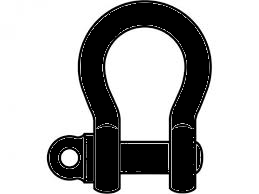These are some of the key safety highlights we recommend that our clients keep in mind during there day-to-day rigging operations.
- When attaching a shackle to a load or a sling as a lifting member tighten the pin securely in place and employ any means necessary to “mouse” the pin to prevent it from backing out.
- Check the shackle pin (nut/ cotter pin if that style), ears and bail for deformation, cracks or metal loss prior to each lift.
- Avoid sudden acceleration, deceleration or shock loading to any rigging equipment.
- Never weld on to a shackle body or pin.
- Never substitute a shackle pin with anything other than the exact replacement pin from the manufacturer.
- Always position the shackle in such a manner so it is being pulled bail to pin, not side-to-side.
- Never force too small a shackle onto a hook.
- Never allow the pin to be in contact with a “running” portion of a sling body, as the pin may be unscrewed.
- Never load shackles beyond their Safe Work Load Limit.
- Check with the manufacturer as to chemical affects on shackles when using caustic or acidic environments. Remove shackle from service for chemical pitting on pin body.
- Check with the manufacturer as to top-end heat range and subsequent loss of rated capacity if involved in high temperature work environment of 600+ degrees F.
- Remove any Shackle from service if SWL marking is not legible.
UPDATE - As of 2006, ASME B30.26- Rigging hardware states that the manufacturer shall be consulted if the shackles are used below -40 degrees Fahrenheit and about 400 degrees Fahrenheit. (See number 11)
Happy Rigging,
This is an article from The Professional Rigger newsletter, 1989.




COMMENTS